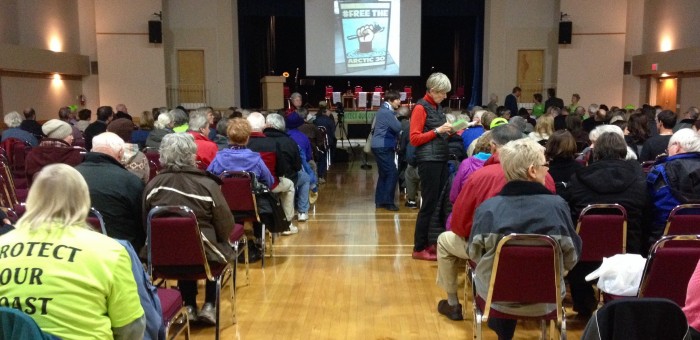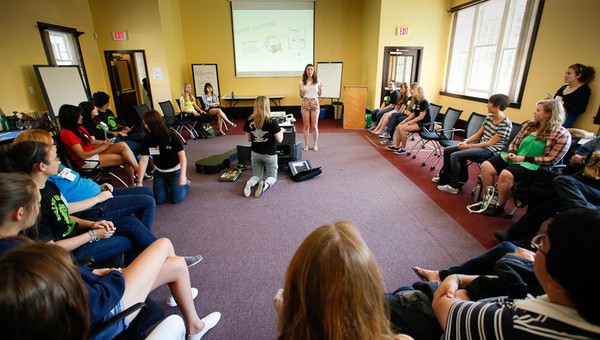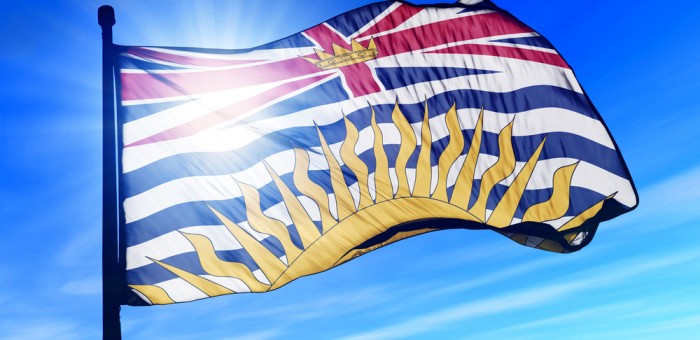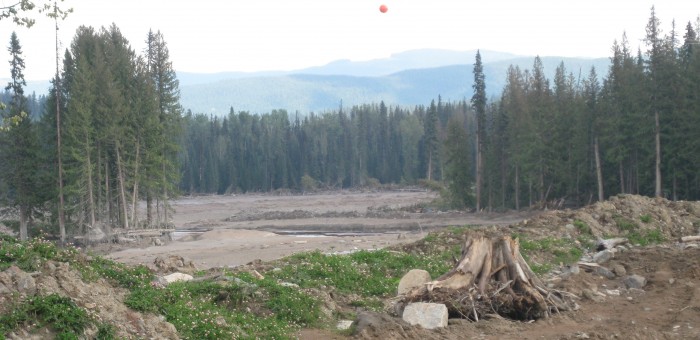Issues & Community Blog - Andrew Weaver: A Climate for Hope - Page 180
Proposed Changes to the Societies Act
Quite a number of constituents have written to me expressing serious concerns about the proposed changes to the Societies Act. Here is the action that I have taken so far.
To provide some context, starting in 2009, the Ministry of Finance began a process to review and update the 1996 Societies Act in order to “modernize and update the statute that provides rules for the incorporation and governance of not-for-profit organizations in B.C.”
The Ministry released a White Paper that outlined a number of policy recommendations and included a revised draft of the Societies Act. The public consultation process for this White Paper ended on October 15th.
During the public consultation period I heard from a large number of constituents (and from others across British Columbia) concerning section 99 of the draft legislation, entitled “Complaints by Public” .
In order to summarize the public feedback I received during the consultation period, I sent a letter to the Minister of Finance on October 16th to ensure that the public, and my, concerns were brought to the direct attention of the Minister.
October 16th 2014
Honourable Mike de Jong
Minister of Finance
Parliament Buildings
Victoria BC V8V 1X4
Dear Minister de Jong,
I am writing to you with respect to the BC government’s Societies Act White Paper. I have received a fair amount of correspondence from constituents, societies and others across British Columbia who are concerned with the direction laid out in section 99, entitled “Complaints by Public”. I would like to ensure that their, and my, concerns are brought to your attention.
To begin, I am unclear as to what existing problem section 99 is meant to be addressing. The White Paper does not identify any specific issue that was the impetus for this provision being brought forward.
Section 99 of the Societies Act White Paper appears to lay out a mechanism that I believe has enormous potential to be abused. Relying on an extremely vague definition of ‘public interest’, this section could act as a vehicle for an unprecedented period of SLAPP lawsuits against groups that cannot afford to defend themselves.
Societies play a critical role in our province. Many of them have minimal financial resources, are staffed or supported by volunteers, and very limited access to legal support. If enacted into law, Section 99 could be used as a bullying tactic. As a result, Societies would have to operate in a culture where freedom of speech is at risk of litigation. While I am not a lawyer, it strikes me that the constitutionality of Section 99 might be called into question.
I recognize that the Societies Act White Paper is being advanced at this stage to gather public feedback on proposed legislation. Nevertheless, I hope that the Ministry recognizes the substantive concerns that are being expressed regarding section 99.
I sincerely hope that changes will be made to the Act before it is brought forward to the legislature for debate and that a legal opinion is obtained as to the constitutionality of Section 99.
Thank you very much for your consideration of this matter,
Yours sincerely,
Andrew Weaver
MLA, Oak Bay-Gordon Head
Unpacking Trans Mountain’s “Credible Worst-Case” Oil Spill
This post is part of an ongoing series in which MLA Andrew Weaver will be sharing key information from inside the National Energy Board hearings on Kinder Morgan’s Trans Mountain pipeline proposal. To see previous posts, please click here.
Trans Mountain’s “Credible Worst-Case” Oil Spill
As part of their analysis, Trans Mountain conducted oil spill scenarios for what they consider to be “credible worst-case” and smaller-sized spills.
The purpose of running these scenarios is to estimate the likely impact a spill would have on our communities and our environment, as well as to gauge their ability to respond to a spill. The problem is, Trans Mountain’s “credible worst case” spill scenario only accounts for a small fraction of the oil that could actually spill.
Here’s what I mean:
A single oil tanker will carry over 110,000 tonnes of oil. Yet, according to Trans Mountain, the maximum size of a “credible worst case” spill (i.e. the largest spill they think could ever actually happen) would only be 16,500 tonnes. That’s only 15% of the oil carried by a single ship.
So where does their definition of a “credible worst case” spill come from?
Trans Mountain undertook a probability analysis, factoring tanker size, shipping lanes and traffic, as well as other data. They found that 90% of their spill scenarios were smaller than 16,500 tonnes in size. Trans Mountain then simply “defined” this to be their “credible worst-case” scenario. That is, they defined ‘credible worst-case’ as the 90th percentile.
That means there is not a single report or study in the entire 15,000 page application that considers what would happen if more than 15% of the oil on a tanker were to spill.
I found this profoundly troubling. In my first round of questions, I asked Trans Mountain to provide an analysis of the risks and impacts of having 100% of the oil spill. This is called a total loss scenario. While it fortunately isn’t a common scenario, it certainly does fall into the realm of possibility.
Unfortunately, Trans Mountain responded by saying that a total loss scenario was not “viable” or “credible”, that my request was therefore not relevant, and so refused to provide the sought after analysis. They base this on the fact that “there has not been any total loss of containment scenarios involving a double hull tanker, ever, to date…”
The Problem with Trans Mountain’s “Credible Worst-Case”
I have two big concerns with Trans Mountain’s logic.
First, the very fact that Trans Mountain’s “credible worst case” oil spill only accounts for 90% of spills means that there is a 10% chance that an oil spill will be larger than their “credible worst case”. 10% isn’t some distant possibility—it’s a very plausible scenario. In fact, the Exxon Valdez spilled roughly 35,000 tonnes of oil—more than double the size of Trans Mountain’s defined “credible worst-case” scenario. The Atlantic Empress released 287,000 tonnes of crude in 1979 after it caught fire and sank in the Caribbean. In 1983 Castillo de Bellver exploded off the coast of South Africa and released 50,000 to 60,000 tonnes of light crude into the sea. In 2002, Prestige split in half and sank off the coast of Spain releasing 63,000 tons. And of course, there are other examples. By refusing to even consider the possibility of these larger spills, they are ignoring spill scenarios that are certainly possible and that would have a devastating impact on our coast.
Second, while it may be true that so far no double-hull tanker has spilled 100% of its oil, this is far from a solid argument. The fact is, policies requiring all new tankers to be constructed with double-hulls are relatively new. It is only within the last 20 years that this has become a mandatory requirement. So, while a total loss incident involving a double-hull tanker has not occurred to date, these ships have not been in use long enough for such a justification to be made with much certainty.
This leads me to two basic questions:
How can Trans Mountain credibly say that they have provided a full analysis of the risks and impacts of marine oil spills, when they refuse to even consider the possibility of more than 15% of oil spilling?
How can British Columbians trust that Trans Mountain can actually clean up a spill, if the largest spill they are prepared for only accounts for a small fraction of the oil onboard?
If you ask me, they can’t.
Celebrating youth in our community – Claire Wood
This is the seventh in our series of stories celebrating the outstanding accomplishments of youth in our community. These inspirational young adults are enriching our lives with their passion and commitment to the betterment of society.
Claire Wood
![image[3]](http://www.andrewjweaver.ca/wp-content/uploads/2014/10/image3-150x150.jpeg) Our first impression of Claire was that she was a teacher or an administrator at Oak Bay High School because of her commanding presence as we met her outside the East Office. She naturally, and quickly took charge and guided us to a small room for our interview. “Sorry for all the mess in here, it’s all the materials for the arrival of Tour de Rock tomorrow”. It turned out that she was one of three co-campaign leaders for the Cops for Cancer Tour de Rock. She was immersed in last minute preparations for the big event to take place at the newly opened Oak Bay gymnasium. Yet, Claire had a calm, approachable demeanor while at the same time exuding confidence.
Our first impression of Claire was that she was a teacher or an administrator at Oak Bay High School because of her commanding presence as we met her outside the East Office. She naturally, and quickly took charge and guided us to a small room for our interview. “Sorry for all the mess in here, it’s all the materials for the arrival of Tour de Rock tomorrow”. It turned out that she was one of three co-campaign leaders for the Cops for Cancer Tour de Rock. She was immersed in last minute preparations for the big event to take place at the newly opened Oak Bay gymnasium. Yet, Claire had a calm, approachable demeanor while at the same time exuding confidence.
 Clare has been involved in Cops for Cancer for a number of years. In grade 10, she shaved her head and raised $2,300.00 for the campaign. In grade 11, she became a project leader, handled media and public relations, worked on the website and emceed a benefit concert. Her role as 2014 co-campaign leader involved a speech and selection process last spring. Claire described her role in this years’ campaign as: overseeing the running of the project (extra challenging this year due to the teachers strike and late opening of school); making sure fundraising was happening; hosting meetings; setting up assembly timeline; media and public relations and assigning jobs. Claire described her leadership style as highly organized, being a good delegator and able to hold people responsible for their commitments.
Clare has been involved in Cops for Cancer for a number of years. In grade 10, she shaved her head and raised $2,300.00 for the campaign. In grade 11, she became a project leader, handled media and public relations, worked on the website and emceed a benefit concert. Her role as 2014 co-campaign leader involved a speech and selection process last spring. Claire described her role in this years’ campaign as: overseeing the running of the project (extra challenging this year due to the teachers strike and late opening of school); making sure fundraising was happening; hosting meetings; setting up assembly timeline; media and public relations and assigning jobs. Claire described her leadership style as highly organized, being a good delegator and able to hold people responsible for their commitments.
![image[1]](http://www.andrewjweaver.ca/wp-content/uploads/2014/10/image1-300x199.jpeg) Claire was born and raised in Victoria, attending Monterey and Margaret Jenkins schools before Oak Bay High. Her favourite courses are Law, Comparative Civilizations and History. She is a high achiever academically too, with an A average. “I’m not a math brain, but I loved Physics” she told us. She received Honours in Grade 9 and Honours with Distinction in Grade 10.
Claire was born and raised in Victoria, attending Monterey and Margaret Jenkins schools before Oak Bay High. Her favourite courses are Law, Comparative Civilizations and History. She is a high achiever academically too, with an A average. “I’m not a math brain, but I loved Physics” she told us. She received Honours in Grade 9 and Honours with Distinction in Grade 10.
In addition to her studies, we weren’t surprised to learn of Claire’s many other activities. She was in Student Council (Grades 9 and 10), Community Leadership (since Grade 9) and a Connect Club Leader in Grade 11 (organizing mixer activities for international students). Last year, she joined the Environment Club and volunteered with Helping Homeless Hearts (organizing Christmas care packages for our homeless population and working at the Rainbow Kitchen). All this, and she has held part time jobs in the food service industry in her spare time! Last year, she received the prestigious Green and White Award at her school and the CTV Amazing Kid Award, along with a $1000.00 prize.
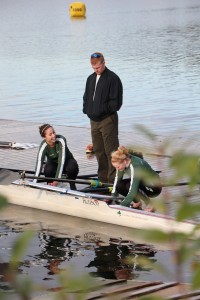 Claire has been a rower since grade 9, competing on both school teams and in club rowing. Unfortunately, this year’s school rowing season had to be cancelled due to the teachers strike. But that hasn’t diminished her passion for it. And Claire told us she’s even met one of her best friends through rowing. Claire was on the school swim and synchronized swim team in Grade 9 and last year, she joined the first girl’s rugby team at Oak Bay High.
Claire has been a rower since grade 9, competing on both school teams and in club rowing. Unfortunately, this year’s school rowing season had to be cancelled due to the teachers strike. But that hasn’t diminished her passion for it. And Claire told us she’s even met one of her best friends through rowing. Claire was on the school swim and synchronized swim team in Grade 9 and last year, she joined the first girl’s rugby team at Oak Bay High.
When asked about who has been inspirational to her, Claire was quick to respond with Murray Allen, Vice Principal at Oak Bay High. “He’s a man of his word and he holds people accountable” she said, and further noted “if he says he will do something, it will get done”. It was clear to us that Claire has tremendous respect for Murray Allen.
In the long term, Claire has her sights set on a career in international relations and federal politics. She is considering a gap year with the Latitudes Program following graduation and she has already applied for a 6 month program in Ecuador. In preparation, she is taking a Spanish course in the evenings through Camosun College. Claire doesn’t have her educational goals “set in stone” and she wants some flexibility, but she did mention her dream school for an eventual law degree would be the University of Toronto. She also talked about first obtaining an undergraduate degree in political science at either the University of Victoria or the University of Toronto.
In the hour we spent chatting with Claire, it became clear to us that she was on a path to do great things. We commented to each other after the interview that we wouldn’t be a surprised to see Claire become our Premier one day. Her interest in politics, impressive leadership skills, confident yet approachable nature, and commanding presence suggest to us that Claire has a very promising future. Our democracy would be profoundly enriched by Claire’s presence, whatever political party she ends up working with.
Standing Alone in Support of a Sustainable 21st Century Economy
Today, for the second time since I was elected, I stood alone in the legislature.
This fall brought our elected representatives back to Victoria to debate the government’s singular plan to develop an LNG export industry in British Columbia. Our new session started on Monday with the government’s Speech from the Throne.
The problem is that the economics simply aren’t there to support an LNG industry on the scale of what has been promised. I’ve been pointing this out for nearly two years now. And as an MLA, I believe that it’s my job to present a realistic alternative when I find myself disagreeing with an idea put before me. It’s not enough to simply say no. Our challenges are too profound to be met with blind opposition.
With that in mind, I used the 30 minutes I am allotted to respond to the throne speech to lay out an alternative vision to the government’s plan. My vision was for British Columbia to develop a diversified economy that seeks to innovate in existing industries while also promoting the up-and-coming pillars of a 21st century economy, such as the clean tech sector. A 21st century economy also includes making new investments into education and core government services while also addressing the growing spectre of climate change. I even mapped out how a responsible LNG, and more broadly the natural gas industry could play its part in this diversified and sustainable future.
As a part of my effort to offer a new alternative, I put forward an amendment to the Throne Speech calling on us, as a legislature and a government, to consider this vision as an alternative path to the one currently proposed by the government.
I made it clear that real leadership is not gambling our future prosperity on a hypothetical windfall from LNG, but instead supporting the development of a diversified, sustainable, 21st century economy as I outlined in my speech.
At the end of the day, I found myself voted down 65-1.
Both the BC Liberals and the B.C. NDP decided they could not support this vision.
Going forward, I will ensure that the government’s hype about the LNG opportunity is met with the honest facts that the future of BC will not be paid for by an LNG windfall. It is, afterall, my job as an MLA to hold the government to account on their promises.
I will also continue to map out my vision of a diversified, sustainable 21st century economy.
I encourage you to read through the entire text of my speech and provide me with feedback on the direction I am proposing.
Probing the Details of the Government Mitigation Plan for Mount Polley
Today in the legislature I was up in Question Period. I took the opportunity to ask the government to outline the steps they are taking to address growing concerns about the lack of response to the short-term environmental, social and economic impacts stemming from the Mount Polley tailings pond breach. Below is the text of my exchange with the Minister of the Environment. I think you will find that it was a very informative discussion.
MY QUESTION
Honourable speaker, It does not serve the public interest to either overestimate or underestimate the scale of what happened at Mount Polley.
We know that on August 4th 2014, the tailings pond at Mount Polley mine breached and 25 million cubic metres of water, tailings and construction material was released into Hazleton Creek, Lake Polley and Quesnel Lake. We also know that on August 5th the Ministry of Environment issued a Pollution Abatement Order to Mount Polley Mining Corporation to comply with a detailed list of requirements pursuant to Section 83 of the Environmental Management Act.
Madame speaker, in May of this year (just weeks before the Mount Polley incident), and after extensive consultation with a variety of stakeholders, the Ministry developed both a Policy on, and accompanying Procedures for, Mitigating Impacts on Environmental Values.
My question through you, honourable speaker, to the Minister of the Environment is this:
The government has an environmental mitigation policy and procedure. Is the government applying them to Mount Polley disaster as part of the pollution abatement order. If not, why not?
MINISTER POLAK’S RESPONSE
I thank the member for the question. We would not ordinarily apply the environmental mitigation policy and procedure to a situation like this, simply because it’s really designed for activities that avoid, minimize, restore or offset what we see as foreseeable impacts of developments when we’re in the planning phase.
However, in this instance — and, of course, it’s unprecedented — I’m advised by staff that as they are reviewing the long-term remediation plan and the comprehensive environmental impact assessment, they’re finding that these guidelines are proving very useful as tools in order to fully develop that plan. It doesn’t directly relate, but it certainly is a part of the review that the ministry, along with other agencies, is conducting on the long-term plan.
MY SUPPLEMENTAL QUESTION
Honourable Speaker, I recently visited the Mount Polley region.
I’ve spoken with local residents, First Nations, mining officials, limnologists, geologists, geochemists and many others. Numerous British Columbians have independently contacted me.
Honourable speaker it is clear to me that British Columbians want to know how government plans to:
- deal with any local environmental impacts;
- deal with any local social impacts;
- deal with the significance that this event is having on the BC mining industry – a pillar of BC’s economy
My question through you to the minister is this. Will the government please outline its environmental, social and economic mitigation strategy for dealing with the repercussions of the Mount Polley tailings pond breach.
MINISTER POLAK’S RESPONSE
Of course, the member has very eloquently articulated just the breadth of the impact of this disaster. It really does take a holistic approach. I will touch only briefly on the responsibilities of other ministries and then outline what’s next in terms of the Ministry of Environment.
I’ve mentioned earlier on that the Ministries of Jobs, Tourism and Skills Training and Aboriginal Relations and Reconciliation have had people in the area working directly with communities, with First Nations. In terms of mining, I know that the Minister of Energy and Mines has been in regular conversations with leaders in the mining industry broadly about the issues this presents for them.
For us…. And it’s very important for me to acknowledge the work of some very key people, that being the Quesnel River Research Centre through UNBC and also one of our key staff people, Jennifer McGuire, who is the head of our regional operations in environmental protection.
We have, as a result, arrived at a couple of working groups, one of which, the environmental working group, you will be aware of from the letter of understanding that we have with the two First Nations. There’s also the Mount Polley science advisory panel. I’ll just quickly…. Representative scientists from DFO, MOE, FLNRO, Environment Canada. There’s industry, of course, First Nations and other university researchers.
Lastly, in the end, they will review the plan. The first phase will take us to June of 2015. The rest of the plan will take us from June of 2015 out into the future. All of that will be made public when the reviews are complete.

